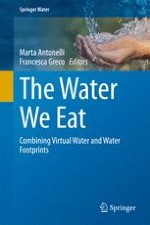
2015 | OriginalPaper | Chapter
Not All Drops of Water Are the Same
Authors : Francesca Greco, Marta Antonelli
Published in: The Water We Eat
Publisher: Springer International Publishing
Activate our intelligent search to find suitable subject content or patents.
Select sections of text to find matching patents with Artificial Intelligence. powered by
Select sections of text to find additional relevant content using AI-assisted search. powered by